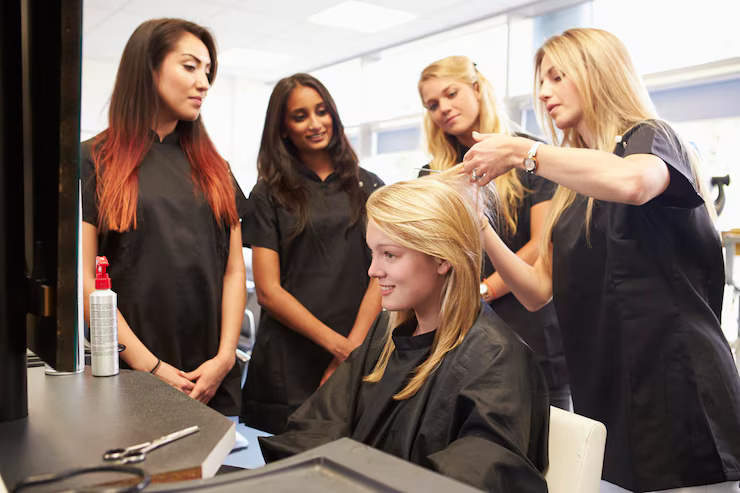Hair Care Tips and Advice: A Complete Overview for Healthy and Modern Looks
Hair care refers to the practices, habits, and products people use to keep their hair clean, healthy, and well-maintained. It exists because hair is not only a biological feature but also an important part of personal appearance, identity, and cultural expression. Across the world, different hair types—straight, wavy, curly, and coily—require different approaches to care.
The need for reliable hair care guidance has grown as lifestyles, environmental conditions, and beauty standards continue to evolve. From protecting hair against pollution to adopting natural and sustainable practices, hair care has expanded beyond simple grooming into a broader conversation about health, wellness, and modern aesthetics.
Importance
Hair care matters today because it influences both physical health and self-confidence. Poor care can lead to problems such as dryness, breakage, dandruff, and hair loss, which affect people across age groups and genders. Healthy hair is also a sign of overall wellness, making it a concern not just for personal style but for hygiene and mental well-being.
The topic is especially relevant in 2025 because:
-
Urban lifestyles expose hair to higher levels of dust, humidity, and pollution.
-
Workplace culture and social media increase the desire for polished, stylish appearances.
-
Global trends encourage natural, chemical-free routines for healthier results.
-
Climate changes influence hair care needs, with more focus on sun and heat protection.
In short, proper hair care provides solutions for maintaining scalp health, preventing common issues, and adapting to changing beauty standards.
Recent Updates
The past year has seen notable shifts in hair care trends, with growing awareness around sustainability and inclusivity. Some of the key updates include:
-
2024–2025 trends in hair care routines emphasize natural ingredients like aloe vera, coconut oil, and rice water for strengthening hair.
-
AI-based hair analysis apps have become popular, offering personalized care advice based on individual hair conditions.
-
Rising awareness of scalp health (2024) has led to a focus on scalp exfoliation and hydration, often compared to skincare.
-
Protective styling for all hair types has gained traction, with braids, buns, and heat-free methods being widely encouraged.
-
Climate-conscious products launched in late 2024 highlight protection against UV damage, humidity, and temperature fluctuations.
This evolution shows how hair care is no longer just cosmetic but increasingly linked to health, technology, and environment-friendly practices.
Laws or Policies
Hair care is indirectly shaped by several government regulations and global standards:
-
Cosmetic regulations: Countries such as the US, UK, and EU regulate ingredients used in shampoos, conditioners, and styling products to ensure safety. Harmful chemicals like parabens and certain sulfates face restrictions.
-
Labeling requirements: Brands must disclose ingredient lists, ensuring transparency for consumers making safe choices.
-
Workplace appearance guidelines: In some regions, policies support employees’ right to wear natural hairstyles, protecting cultural expression (e.g., the CROWN Act passed in several US states between 2020–2024).
-
Environmental rules: Some governments are encouraging eco-friendly packaging to reduce plastic waste in beauty industries.
These policies ensure that hair care practices are safe, ethical, and respectful of both health and cultural diversity.
Tools and Resources
Maintaining healthy hair is easier with digital and practical resources that provide reliable guidance:
-
Mobile apps:
-
Hair Journal – track hair growth and routines.
-
AI Hair Scanner – analyze scalp condition and suggest improvements.
-
-
Websites & communities:
-
Dermatology association sites for science-backed hair care information.
-
Online forums and knowledge hubs focusing on natural and modern methods.
-
-
Educational tools:
-
Ingredient checker databases to understand product safety.
-
Hair type charts for identifying specific care needs.
-
-
Lifestyle resources:
-
Stress management apps and nutrition guides, since diet and wellness strongly affect hair quality.
-
By combining traditional wisdom with modern technology, these resources help individuals make informed choices for sustainable and effective care.
FAQs
What are the best basic steps for healthy hair care?
The essentials include washing with a mild shampoo, conditioning regularly, protecting hair from excessive heat, eating a balanced diet, and keeping the scalp clean.
How often should I wash my hair?
It depends on hair type and lifestyle. Oily scalps may need washing every 1–2 days, while dry or curly hair may only need cleansing twice a week.
Are natural oils better than synthetic hair products?
Natural oils like coconut, argan, or jojoba can help nourish and protect hair, but not all synthetic products are harmful. What matters is choosing products free from harsh chemicals.
Does diet really affect hair health?
Yes. Proteins, vitamins (especially B-complex and biotin), and minerals like iron and zinc play a major role in hair strength and growth.
How do I protect hair from pollution and climate change?
Covering hair when outdoors, using protective serums, and regular deep conditioning can minimize damage from dust, UV rays, and humidity.
Conclusion
Hair care today is more than a beauty routine—it is a holistic practice that blends hygiene, health, style, and environmental awareness. The rise of natural solutions, AI-powered tools, and inclusive policies shows that hair care is adapting to modern needs.
By understanding hair types, following healthy routines, and making informed choices based on credible resources, anyone can maintain hair that is both strong and stylish. In 2025, the focus remains on balance—caring for hair in a way that supports personal well-being, cultural identity, and sustainable living.